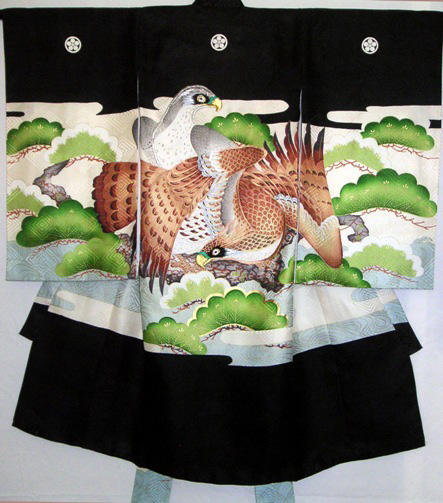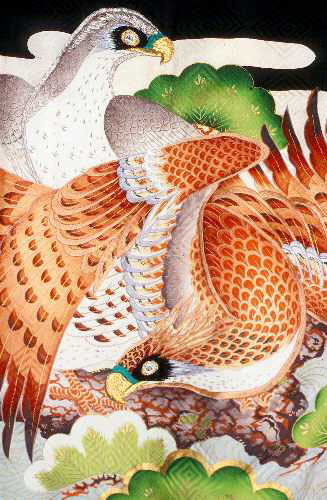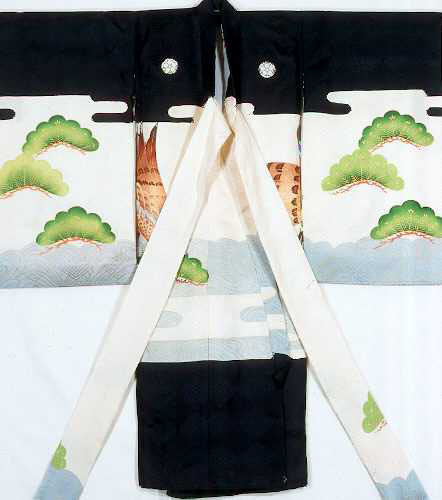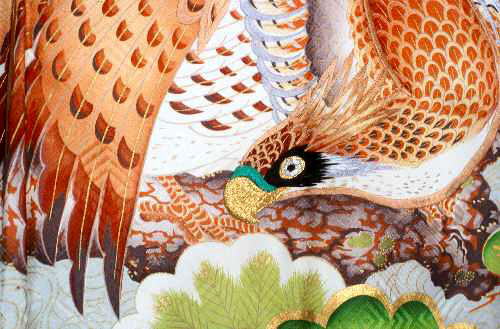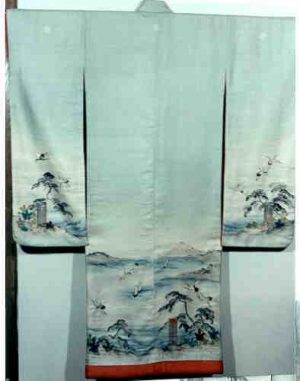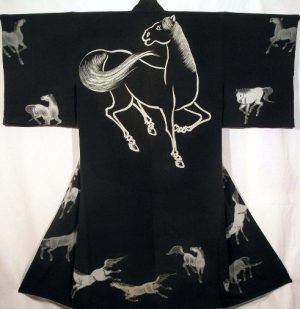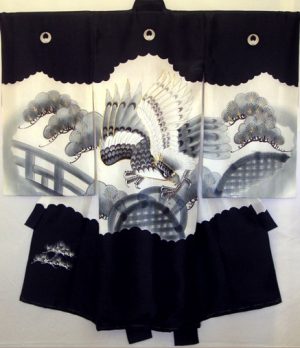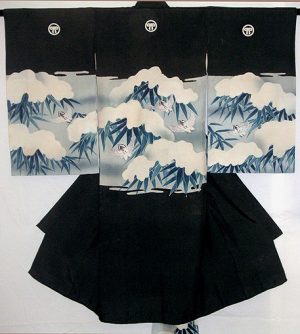Description
A young boy of noble standing wore this marvelous handwoven Silk Boy’s Kimono for Boys’ Day in Japan. This “one in a million” design of dramatic Hawk resting in a stylized Japanese Pine is breathtakingly realistic. The Hawk or Falcon is often considered the king of birds in Japan. Warriors especially liked the bird because of its fierce and powerful nature, as well as the visually striking patterns of its plumage. These Hawk perch on stylized branches of the Pine, “Matsu,” the tree of longevity. Thus, the symbolism of this Kimono represents power and long life. Reinforcing the nature of this striking design is the overall background weave of the Silk. It is a repeat of the “Kuginuki” or Square Nail Extractor pattern which was one of the most popular motifs of high ranking warrior families.
This striking, formal, Boys Silk Kimono has been heavily embroidered with pure, white and yellow gold threads. It has been hand painted in the “Rice Paste Resist” technique which required that each color be applied separately, while all the others are painted out in the rice paste. Each time a new color was added, the rice paste had to be removed by soaking it out over and over again in the local river water. The creation of this fabulous Kimono required enormous time and skill to complete. It is in excellent condition.
The Family Crest, “Mon,” appears 5 times on the shoulders and back of the garment and indicates that it was to be worn for formal occasions. The Crest is that of the Plum, “Ume,” which represents far more than beauty. Although it appears delicate and fragile, it appears in late winter, despite the chill, and is considered one of the “three companions of the cold.” It was actually practical as well as hardy and would definitely strengthen the theme of the Kimono’s design. From the high sheen of this finely handwoven Silk to the actual painting and fabulous embroidery, this Boys’ Kimono is a valued heirloom.
DATE: Late Meiji Era (1868-1912) to Early Taisho Era (1912-1926), turn of the Century

